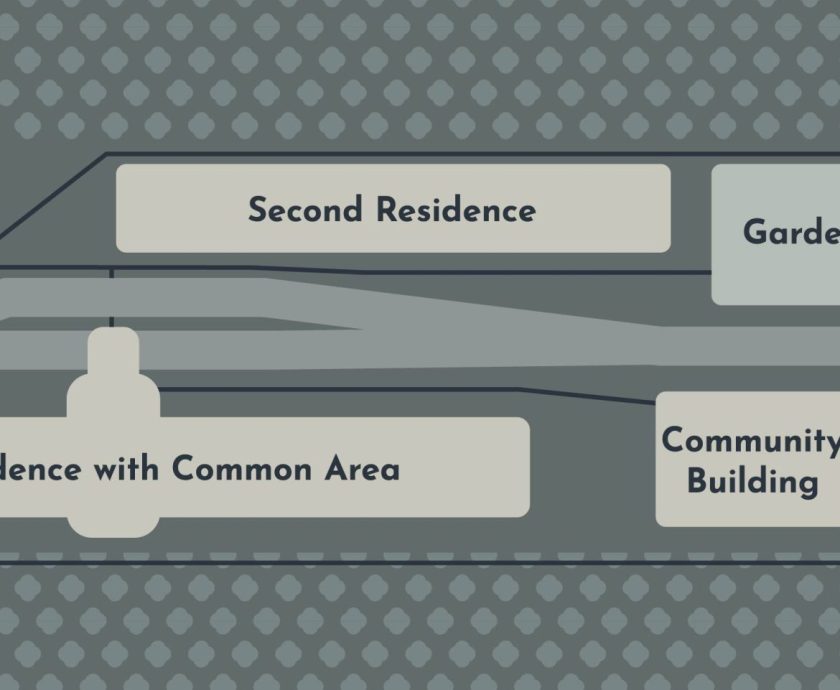Telehealth OT for Adult Traumatic Brain Injury Survivors
Key Takeaways
- Telehealth OT delivers personalized brain injury rehab at home, improving cognition, motor skills, and daily living activities.
- Insurance (Medicare, Medicaid, private) often covers virtual OT—verify plan specifics early.
- Choose platforms with secure video, interactive tools, and progress tracking.
- Caregivers play a vital role in technology setup, session facilitation, and home exercise support.
- Success stories demonstrate real-world gains in independence and quality of life.
Telehealth occupational therapy provides adult traumatic brain injury survivors with personalized rehabilitation services from the comfort of home. This innovative approach combines technology with expert care to improve cognitive function, motor skills, and independence in daily activities.
Online Occupational Therapy Exercises for TBI Recovery
When it comes to recovering from a traumatic brain injury (TBI), consistent rehabilitation is crucial. Telehealth occupational therapy has transformed how survivors access care, bringing specialized exercises right into the home.
"Telehealth provides continuity of care that's essential for TBI recovery," explains Dr. Sarah Chen, an occupational therapist specializing in neurorehabilitation. "Nearly 3.5 million TBI-related emergency department visits, hospitalizations, and deaths occur annually, and early, ongoing rehabilitation can significantly improve independence and reduce complications."
Cognitive Exercises: Memory, Attention, Executive Function
Cognitive recovery often tops the priority list for TBI survivors. Telehealth OT offers diverse approaches to strengthen these skills:
"We distinguish between long-term and working memory in our online exercises," says Chen. "For long-term memory, we might use digital flashcards or personalized memory books shared through screen sharing. For working memory, we implement real-time memory games where clients have to remember sequences or locations."
Attention-focusing apps and digital puzzles have become staples in virtual therapy. Programs like Lumosity or CogniFit can be incorporated into sessions, with therapists monitoring performance remotely. These tools adapt to each survivor's abilities, gradually increasing in difficulty.
Executive function training focuses on real-life task simulations. "We'll have clients plan a grocery list on a shared screen," explains Chen. "Then we'll introduce complications—items being out of stock or budget constraints—to practice problem-solving and mental flexibility."
Physical and Motor Skill Activities
Contrary to what some might expect, motor skills can be effectively addressed through telehealth:
"For fine motor practice, we guide clients through buttoning exercises or handwriting tasks while observing their technique via camera," says Emma Roberts, OTR/L. "We can demonstrate proper finger positioning and provide immediate feedback."
Gross motor coordination exercises include virtual balance games where clients might follow on-screen movement patterns. Therapists can observe posture, stability, and form, making corrections as needed.
Adaptive equipment demonstrations have become more sophisticated in the telehealth environment. "We'll ship clients simple tools before sessions or help them repurpose household items," Roberts notes. "Then we demonstrate proper usage via video, watching them practice in real-time."
Activities of Daily Living (ADL) Practice
One of telehealth OT's greatest strengths is addressing daily living skills in the actual environment where they'll be performed.
Simulated kitchen or self-care routines allow therapists to observe how clients navigate their own homes. "I can watch a client prepare a simple meal in their kitchen, identifying where they struggle and suggesting immediate modifications to their technique or environment," says Roberts.
Energy conservation techniques are particularly valuable for TBI survivors who experience fatigue. Telehealth sessions include identifying energy-draining activities and implementing rest breaks or efficiency strategies.
Safety awareness exercises focus on identifying hazards in the home environment. "Together, we'll do a virtual walkthrough of their space, identifying trip hazards or unsafe transfers," explains Chen. "This real-time assessment in their actual living space is something we can't replicate in a clinic."
How to Access Telehealth OT for Brain Injury Survivors
Finding appropriate telehealth occupational therapy requires understanding the landscape of providers, technology requirements, and scheduling options.
Finding Certified Telehealth Occupational Therapists
Not all occupational therapists are equipped to provide telehealth services, especially for complex TBI cases.
"Start by verifying state licensure requirements," advises Dr. Michael Patel, a telehealth rehabilitation specialist. "Therapists must be licensed in the state where the patient resides, though some states participate in interstate compacts that allow practice across state lines."
The American Occupational Therapy Association's telehealth guidelines outline essential credentials to look for: "Always confirm OTR/L credentials, which indicate a registered and licensed occupational therapist," notes Patel. "Additionally, look for specialists with TBI experience and telehealth training certifications."
Many hospital networks now offer telehealth OT through their rehabilitation departments, providing seamless coordination with other TBI care providers. Alternatively, private practice therapists specializing in neurological conditions may offer more flexible scheduling.
Technology Requirements and Setup
Successful telehealth therapy requires adequate technology:
"At minimum, patients need a reliable internet connection—at least 5 Mbps download speed—and a device with a camera," explains technology coordinator Jasmine Wu. "While smartphones can work, tablets or laptops with larger screens typically provide a better experience, especially for detailed exercises."
Before your first session, you'll need to install any required platforms or apps. Common telehealth platforms include Zoom for Healthcare, doxy.me, or specialized rehabilitation software like Constant Therapy.
"Test your setup before the initial appointment," Wu recommends. "Common issues include poor camera positioning, background noise, or insufficient lighting—all easily fixed with advance preparation."
For those with limited technology access, some insurance plans now cover basic telehealth equipment, and many therapy practices offer loaner devices.
Scheduling, Session Frequency, and Duration
Telehealth offers greater scheduling flexibility than traditional in-person therapy:
"Standard sessions typically run 30-60 minutes, similar to in-clinic appointments," says Roberts. "However, we can sometimes offer shorter, more frequent sessions for clients with fatigue or attention issues—something that would be impractical with in-person visits."
The optimal frequency depends on injury severity, recovery stage, and individual goals. Newly injured TBI survivors might benefit from 3-5 weekly sessions, while those further along might need only weekly maintenance.
"The beauty of telehealth is its flexibility," notes Chen. "We can schedule evening or weekend sessions to accommodate work schedules or caregiver availability—dramatically increasing participation rates."
Insurance Options for Telehealth TBI Therapy
Navigating insurance coverage for telehealth occupational therapy requires understanding various options and requirements.
Medicare and Medicaid Coverage
Medicare coverage for telehealth OT expanded significantly in recent years:
"Under current Medicare rules, occupational therapy services delivered via telehealth are reimbursable for beneficiaries in approved originating sites," explains healthcare administrator Rebecca Johnson, citing the Medicare Telemedicine Health Care Provider Fact Sheet. "This includes CPT codes 97165-97168, covering OT evaluations and re-evaluations."
Medicaid coverage varies by state, with most states now offering some telehealth OT benefits. "Check your state's specific Medicaid telehealth policy," Johnson advises. "Some states require the same reimbursement rates for telehealth as in-person services, while others may have different fee schedules."
Documentation requirements remain stringent—therapists must thoroughly document medical necessity, functional goals, and progress measures for telehealth sessions.
Private Insurance Plans
Private insurance coverage for telehealth OT has expanded, but policies vary widely:
"Always verify telehealth benefits before starting therapy," recommends Johnson. "Ask specifically about occupational therapy telehealth coverage, as it may differ from general telehealth benefits."
In-network providers typically offer the most affordable option, though some insurers now offer similar coverage for out-of-network telehealth specialists with TBI expertise.
Preauthorization remains essential. "Have your OT provider submit a detailed letter of medical necessity that specifically addresses why telehealth delivery is appropriate for your TBI rehabilitation," Johnson suggests. "Include any mobility limitations, transportation challenges, or evidence that telehealth outcomes are comparable to in-person care for your specific needs."
Out-of-Pocket, Sliding Scale, and Grants
For those without adequate insurance coverage, alternative payment options exist:
"Private-pay telehealth OT typically ranges from $75-150 per session," says Johnson. "This is often less expensive than in-clinic rates due to reduced overhead costs."
Many practices offer sliding-scale fees based on income, particularly for long-term rehabilitation needs. Additionally, nonprofit organizations like the Brain Injury Association of America offer grants and financial assistance programs specifically for telehealth rehabilitation services.
"Don't overlook community resources," Johnson adds. "Some university training programs offer low-cost telehealth OT through student clinics supervised by licensed professionals—an excellent option for maintenance therapy."
Best Telehealth Platforms for Brain Injury Rehabilitation
Selecting the right telehealth platform can significantly impact therapy effectiveness and ease of use for both TBI survivors and caregivers.
Key Features to Look For
Security and functionality should top your platform priority list:
"HIPAA-compliant video conferencing is non-negotiable," emphasizes telehealth technology specialist David Park. "The American Telemedicine Association's guidelines recommend secure end-to-end encrypted video conferencing, standardized patient consent procedures, and robust data storage and user authentication."
Beyond basic video capabilities, interactive features enhance therapy effectiveness. "Look for platforms with integrated whiteboards for cognitive exercises, screen-sharing capabilities, and exercise libraries the therapist can customize and assign," Park recommends.
Progress monitoring dashboards help track improvements over time. "The best platforms include assessment tools that compare performance across sessions, showing measurable gains in memory, attention, or task completion times," explains Park.
Top 3 Recommended Platforms
While many platforms serve general telehealth needs, some offer specialized features for TBI rehabilitation:
Platform A: Constant Therapy offers specialized TBI modules with over 100,000 cognitive, speech, and language exercises. "What makes Constant Therapy stand out is its adaptive algorithm that adjusts exercise difficulty based on performance," says Park. "Plus, patients can practice between sessions, with results automatically shared with their therapist."
Platform B: NeuroRehab Connect excels in caregiver collaboration tools. "This platform includes split-screen demonstrations where caregivers can watch proper techniques, record therapy sessions for later reference, and access a caregiver portal with training videos," notes rehabilitation technologist Maya Diaz.
Platform C: RehametricsTM integrates wearable data from devices like smartwatches or motion sensors. "For clients working on motor skills or activity pacing, Rehametrics can incorporate real-time movement data or step counts, allowing therapists to monitor home exercise program compliance," explains Diaz.
Security, Privacy, and Data Protection
When dealing with sensitive medical information, security becomes paramount:
"The ATA Practice Guidelines for Telerehabilitation emphasize encryption standards that protect both the video session and any stored therapy data," notes cybersecurity specialist Eric Thomas.
User authentication should include strong password requirements and possibly two-factor authentication, especially for platforms storing assessment results or personal information.
"Review the platform's data storage policies," Thomas advises. "Some store recorded sessions or exercise results indefinitely, while others automatically delete after a certain period. Ensure these policies align with your privacy preferences."
Patient consent procedures should be clearly explained. "Reputable platforms require explicit consent for recording sessions or sharing data with other providers," says Thomas. "This should be documented within the platform itself."
Caregiver Guide to Virtual Occupational Therapy for TBI
Caregivers play a crucial role in the success of telehealth occupational therapy, often serving as the therapist's hands in the home environment.
Preparing the Home Environment
Creating an optimal therapy space improves session productivity:
"Start by decluttering the therapy area," suggests caregiver support specialist Olivia Martinez. "Remove visual distractions that might pull attention away from the screen, especially important for TBI survivors with attention deficits."
Lighting considerations are vital for therapist observation. "Position lighting in front of the client, not behind, to avoid shadows or silhouettes that make it difficult for therapists to observe movements or expressions," Martinez recommends.
Furniture setup should prioritize safety and visibility. "Arrange seating so the therapist can view full-body movements when needed. Ensure furniture is stable, particularly if standing exercises are planned."
Gathering necessary supplies before sessions prevents interruptions. "Keep a therapy kit with commonly used items—pens, paper, small objects for manipulation, resistance bands—within easy reach," suggests Martinez.
Role of the Caregiver During Sessions
Caregivers often serve as therapy assistants during telehealth sessions:
"Assist with device operation, especially in early sessions or for clients with cognitive challenges," Martinez explains. "This might include adjusting camera angles, managing audio settings, or navigating digital exercise materials."
Physical assistance may be required for certain exercises. "The therapist may ask you to provide manual support during stretching, resistance during strengthening activities, or physical cueing for movement patterns," notes Martinez. "They'll demonstrate exactly what's needed."
Perhaps most importantly, caregivers boost motivation and engagement. "Your encouragement carries significant weight," Martinez emphasizes. "Celebrate small victories and maintain a positive atmosphere, while allowing the client to attempt tasks independently whenever possible."
Effective Communication with Therapists
Open communication ensures therapy addresses evolving needs:
"Share observations about performance outside of therapy sessions," recommends Martinez. "Has the client been using techniques in daily life? Are they experiencing frustration with particular tasks? This real-world feedback helps therapists refine their approach."
Document questions as they arise between sessions. "Keep a notebook where you jot down challenges or successes throughout the week, creating a ready-made agenda for the next session," suggests Martinez.
Ask for clarification about exercise modifications when needed. "Don't hesitate to request simpler explanations or alternative approaches if something isn't working. The therapist wants to make exercises accessible and often has multiple teaching strategies."
"This meta-analysis shows home telerehab yields effect sizes comparable to in-person therapy for memory, attention, executive function, and ADL performance," Martinez notes, referencing a systematic review on home-based telerehabilitation for traumatic brain injury. "Patients report high satisfaction, and caregivers experience reduced burden when involved in remote sessions."
Adult TBI Telehealth Therapy Success Stories
Real-world experiences demonstrate how telehealth occupational therapy transforms recovery journeys for adult TBI survivors.
Case Study 1: Cognitive Recovery and Return to Work
James, a 42-year-old financial analyst, experienced a moderate TBI in a cycling accident, leaving him with significant memory and executive function deficits.
"Initially, James couldn't remember tasks from one day to the next and became overwhelmed with planning," recounts his occupational therapist, Dr. Chen. "His goal was returning to work, which required substantial cognitive rebuilding."
Through telehealth, James engaged in three weekly sessions focused on memory strategies, attention training, and executive function drills. "We created a digital memory system using his existing devices, practiced managing distractions in his actual home office, and developed compensatory strategies for his specific job tasks," Chen explains.
Key milestones emerged gradually. "After six weeks, James could follow a structured daily routine with minimal cues. By three months, he successfully managed multi-step projects using our adapted planning system. At six months, he returned to part-time work, with continued telehealth sessions focused on workplace-specific challenges."
James particularly benefited from the contextual relevance of home-based therapy. "Practicing in the same environment where I needed these skills made a tremendous difference," he shares. "I wasn't just learning techniques in a clinic and then struggling to apply them at home or work—we developed strategies specifically for my desk, my computer, my job demands."
Case Study 2: Regaining Physical Independence
Elena, a 67-year-old retired teacher, suffered a TBI from a fall, resulting in balance issues, left-sided weakness, and difficulty with daily self-care.
"Elena lived alone in a rural area, 45 minutes from the nearest rehabilitation facility," explains Roberts, her telehealth OT. "Transportation barriers were preventing consistent therapy, until we implemented a telehealth program with her nephew providing in-home support."
Roberts developed customized motor plans addressing Elena's specific home environment. "We practiced transfers using her actual furniture, modified her bathroom setup for safety, and created kitchen strategies that accommodated her limitations."
Elena's nephew received caregiver training via video, learning proper guarding techniques and how to progress exercises between sessions. "Having instruction while in Elena's home meant we could address specific challenges—like her narrow hallway or the step into her shower—rather than trying to simulate these in a clinic," the nephew explains.
Progress tracking focused on activities of daily living. "Elena maintained a daily independence log, rating her assistance needs for each activity," says Roberts. "We celebrated when bathroom activities moved from 'maximum assistance' to 'standby assistance,' and kitchen activities from 'dependent' to 'independent with adaptive equipment.'"
After four months, Elena could manage all essential self-care and basic meal preparation independently. "Telehealth literally kept me in my home," Elena shares. "Without it, I would have needed to move to assisted living."
Lessons Learned and Tips for New Patients
These success stories yield valuable insights for those beginning telehealth OT:
Consistency trumps intensity. "Regular, shorter sessions often yield better results than occasional intensive ones," notes Chen. "James made remarkable progress with three 30-minute sessions weekly, which felt manageable even with fatigue."
Patience through plateaus pays off. "Elena experienced several weeks with seemingly no progress, then sudden functional gains," Roberts recalls. "Recovery isn't linear, particularly with brain injuries."
Digital tools enhance motivation. Both James and Elena benefited from progress-tracking applications that visualized their improvements. "Seeing my weekly scores improve kept me going through difficult periods," James shares.
Environmental context matters. "The most successful exercises directly addressed challenges in the patient's actual living space," Chen emphasizes. "Generic exercises from a clinic don't compare to targeted strategies developed in the environment where they'll be used."
Caregiver involvement enhances outcomes. "In
Conclusion
Telehealth occupational therapy for adult traumatic brain injury survivors offers a convenient, customizable path to recovery—combining online exercises, caregiver involvement, and insurance-covered services. Whether you're just beginning or seeking to enhance your current plan, virtual OT can help restore independence and quality of life. Ready to get started? Contact a certified telehealth OT provider today to schedule your first session and take the next step toward meaningful recovery.










